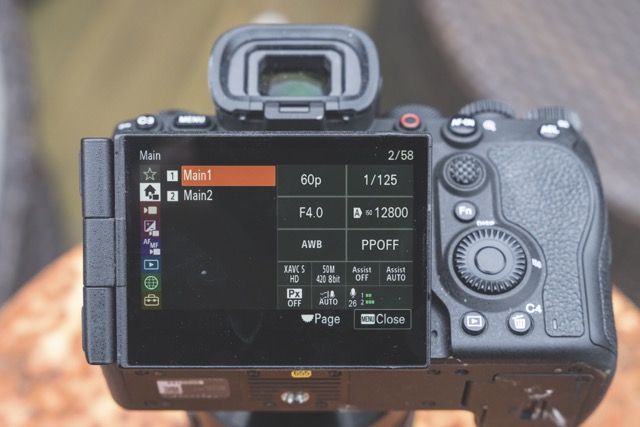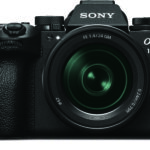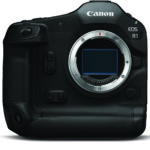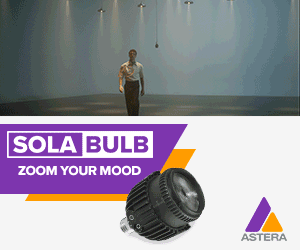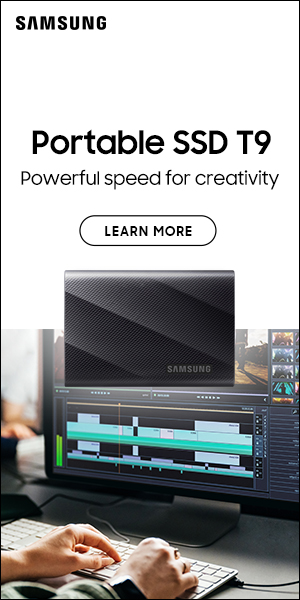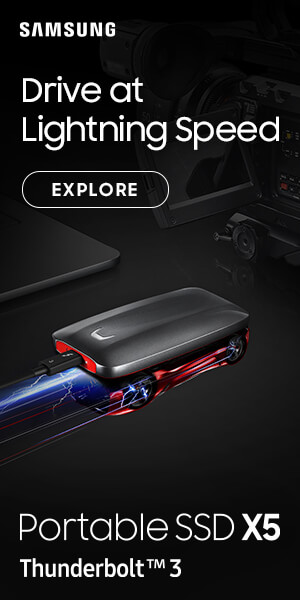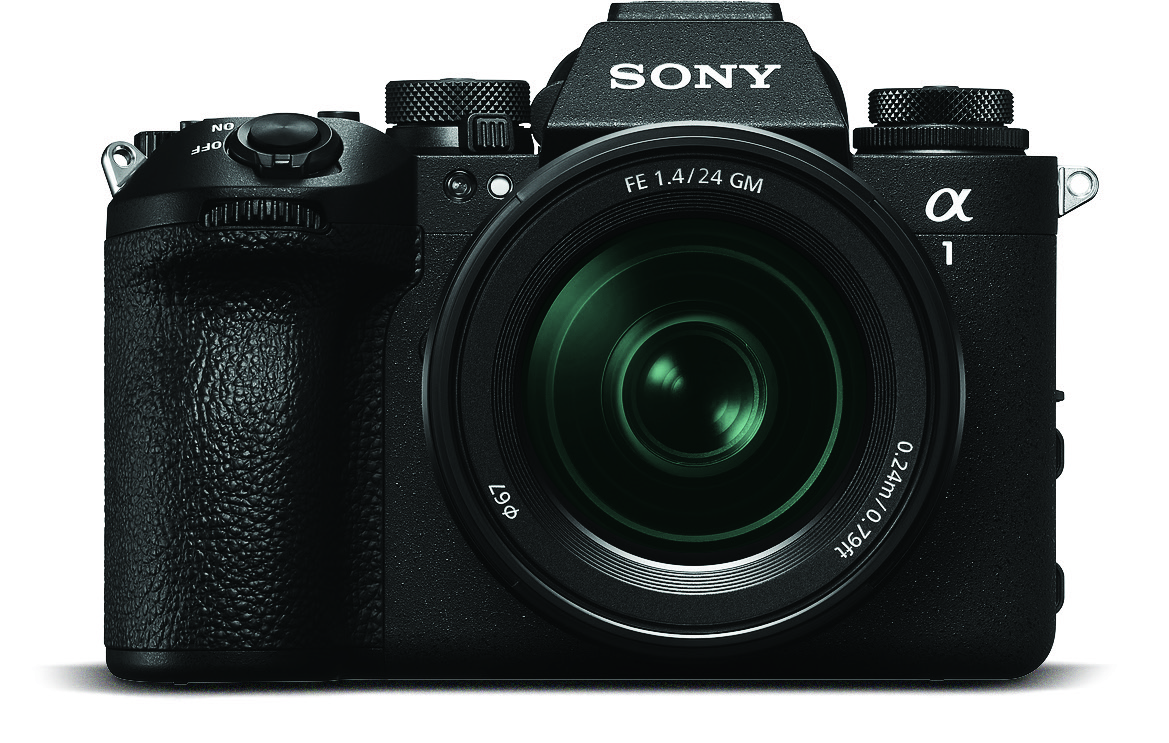
Big test: Sony A9 III
Posted on May 7, 2025 by Pro Moviemaker
Global game changer
Sony’s speedy sports camera is the first and only mirrorless featuring a global shutter, putting an end to bendy verticals
Words Adam Duckworth
If you’re looking for the best all-round mirrorless camera that’s a master of everything, the A9 III is not the one. But if you have specific needs around how a camera handles fast pans or works with flash for stills, this full-frame Alpha may be your dream purchase, offering something no others can.
In one fell swoop, Sony has wiped out the dreaded ‘jello’ effect of skewed verticals and banished the idea of a maximum flash sync speed with its A9 III, the first full-frame mirrorless camera equipped with a global shutter image sensor instead of a conventional rolling shutter.
That’s a big deal because normal shutters read the signal from the top of the sensor to the bottom. If there is very fast movement, vertical lines appear at an angle, which is a major issue in fast pans when shooting video or stills.
It also means flash sync is limited, restricting creative pro stills shooters from choosing their preferred shutter speed to control the background while maintaining full power from their flash units.
A global shutter sensor delivers distortion-free images by reading from the entire sensor at once, making it perfect for whip pans, shooting from fast-moving vehicles or capturing rapid subjects. It also eliminates banding from artificial lights: the bane of working image makers. This technology allows stills burst speeds of up to 120fps with no distortion, viewfinder blackout or AF restrictions.
The global shutter enables full-power flash sync at any shutter speed, unlike the usual 1/250 or 1/400sec cap on the Sony A1 and A1 II. This means you can shoot at 1/80,000sec with flash still functioning. In continuous shooting, the maximum sync speed drops to 1/16,000sec, but a firmware update is expected to remove this cap. It’s a camera aimed at sports and wildlife image makers, and they’re lapping it up.
For video, the A9 III is the first Sony mirrorless to record 4K at 120fps with no crop. It also captures high-res 4K/60p with oversampling from the 6K sensor, delivering truly amazing quality. The new sensor and processor enable Sony’s latest AI-driven AF, performing up to 120 AF/AE focus calculations per second.
The A9 III’s stacked CMOS sensor boasts 24.6 megapixels and built-in memory, combined with the latest Bionz XR image processing engine. This also powers the phase detection AF, while a designated AI processing unit uses real-time recognition algorithms to identify a wide variety of subjects when shooting video or stills.
Like the A1 II, the AI processing unit provides an improvement in human eye recognition and tracking. Human pose estimation technology detects not just eyes but also body and head position, enabling the AF to lock onto and track a subject even if they’re facing away or their face is covered. The AF system works in light levels as low as -5EV in AF-S mode. It really is excellent: the best Sony has ever made.
There are customisable focus areas that have been expanded to include XS to XL instead of the previous S, M and L sizes. The Preset Focus/Zoom function allows focus and zoom settings to be memorised in the camera for speedy recall. In addition to the existing custom white balance frame size, you can now select other sizes for fine white balance adjustment after an image has been composed.
The A9 III features Sony’s latest four-axis, multi-angle touchscreen LCD monitor as well as an electronic viewfinder with a 9.44-million-dot Quad XGA OLED – exactly like the flagship A1 II.
It also includes five-axis in-body image stabilisation with eight stops of shake reduction and focus breathing compensation, inherited from the latest Sony A7R V. Like the A1 II, if you want a deep grip with more battery power, add on the optional grip.
For video colours, the S-Cinetone gamma and S-Log3 are included. In Log mode, you can apply imported user LUTs. Additionally, the camera is compatible with the Monitor & Control mobile app.
The older A9 models had a slightly cut-down selection of video specifications, but the new version is much better. It offers 4K video up to 120fps with no crop and can also record 10-bit 4:2:2 internally using All-Intra encoding for maximum quality. What’s more, it can output 16-bit Raw via the full-size HDMI port to an external recorder.
You might be wondering why the A9 III gets this super-shutter technology while the A1 II doesn’t. That’s because the resolution of the sensor is lower, and one of the key issues with a global shutter is that it can reduce dynamic range and offer lower sensitivity. For example, the standard ISO range is 250-25,600 rather than the 100-51,200 on the older A9 II. Additionally, when shooting for maximum dynamic range, the S-Log3 setting gives a relatively high base ISO of 2000. Therefore, you’ll need ND filters to bring the aperture under control in bright conditions.
In use, the camera is simply incredible at shooting fast-moving subjects. Full-size stills at 120fps are frankly insane, and being able to select the exposure you want when shooting with flash makes this camera worth every penny. Portrait shooters who want shallow depth-of-field with flash, without resorting to ND filters, will rejoice. The only downside is the relatively low pixel count – you can’t crop as much as on a 50-megapixel camera. That hurts its TIPA stills rating.
For video, the absence of rolling shutter artefacts is another huge benefit, as is the lack of banding when used under artificial lights – especially the older ones found in many amateur sports arenas. But the dynamic range is definitely lower and there’s more noise in low light. It’s easier to see this in stills but is there in video, too.
If this isn’t an issue for you, the A9 III could be the best camera you have ever owned for shooting action, letting you capture images its rivals simply can’t.
The verdict
You will instantly know if this is the camera you’ve been waiting for. Great handling and video spec pales into insignificance compared to what a global shutter can do for your work. And that’s predominantly for shooters who focus on speed, from sports to wildlife. Thanks to its stunning autofocus, this camera will help many improve their work.
Of course, there is the factor of low-light performance and, for stills, lower resolution than some cameras. But the 4K video is fantastic, and the 120fps in 4K with no crop is new to Sony and will make some moviemakers take a lot of interest.
It’s a unique camera that does things none of its rivals can. If you can make use of these benefits, it’s the best pick for you.
TIPA rating
Video image quality: 81
Photo image quality: 73
Features: 9
Global shutter but no internal Raw
Performance: 9
Incredibly fast frame rates and no video skewing
Handling: 9
Same as the flagship A1 II
Value for money: 9
Cheaper than the flagship and some rivals
Pro Moviemaker overall rating: 9/10
The only full-frame mirrorless with a global shutter
- Pros: No more bendy verticals, no upper flash sync
- Cons: Not the very best stills quality
This review was first published in the May/June 2025 issue of Pro Moviemaker


